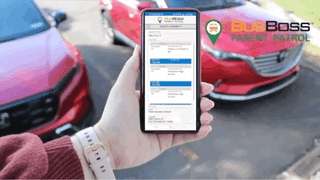Technology and Communication: Crucial for Bus Safety & Parent Notifications
published on October 04, 2024 by Sonia Mastros
Student Tracking Software, school bus tracking software, student transportation software, RFID student ridership tracking, Student School Bus Safety

If there's a problem on one of your bus routes that affects the student ridership, how long does it take to notify everyone involved?
There's no single "right" answer to the question, but that span of time should be as short as possible. From getting assistance to the driver - if needed - to notifying parents whose children will be late getting home, proper communication creates a much more efficient bus system. Good internal communication also reduces the chances of problems going unreported, or getting 'lost in the shuffle.'
Upgrading your communications is a short-term investment which can bring extended long-term benefits.
Building A Strong School Bus Communications System
1 - Regularly inspect and verify your radios
You undoubtedly have some form of radio communication and/or cell phones in your buses. Be sure to regularly inspect them and verify all the equipment is working properly.
Your bus drivers most likely have personal cell phones as well, but that should only be an emergency backup option. The onboard radios should be as reliable as possible.
2 - Document lines of communication
When something goes wrong - whether it's an incident on the road or a problem with a bus in the barn - there should never be any question about who to call, and who that person notifies next. Confusion over lines of communication can greatly slow down response times, or potentially even endanger riders in the worst situations.
Well-documented policies for communication will prevent this. Be sure to include alternative options, in the case a key person is unavailable for whatever reason.
3 - Invest in parent messaging apps
Keeping in contact with parents can be difficult, especially when so many people today deliberately don't answer voice calls. One of the best ways to get around this is investing in a notification app which will push important alerts directly to parents' phones, rather than relying on them to answer the phone.
Notification apps also serve a second major purpose: they can cut down on calls to the office. Parents can self-serve information on the app, such as expected arrival times. Keeping your office phone lines clear of parent questions improves the flow of important communications between team members.
4 - Plan ahead with plenty of notice
Are you aware of an upcoming event which will take buses out of service, and potentially impact the student ridership? This might be something like a major field trip taking up several buses, or just planned maintenance on an older bus.
Either way, make sure to communicate this to your team and to the parents as early as possible. Keep everyone on the same page, so there's no confusion if you have to adjust the bus schedule for a day or two.
5 - Look to the future
Any sort of investment into communications infrastructure should be seen as a long-term project. Don't simply solve the communications issues you have today; look forward and try to predict potential issues for the next 5-10 years. For example, if your district is growing steadily, be sure your communication plans include expected expansions to its usage.
Smart spending today can pay off in a big way later on, saving money and improving efficiency.
BusBoss can be your partner in improving your bus management! From building better routes to streamlining bus-tracking with data reporting, we have years of experience helping school districts make their buses safer and more efficient.
Contact us to learn what BusBoss can do for you!
School Bus Tracking Benefits Everyone
Tracking is good for districts, it’s good for students, and it’s good for parents. That makes it a real win-win investment for districts. What arguments do you find compelling, when talking about bus tracking?






